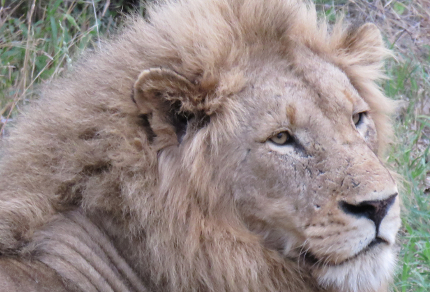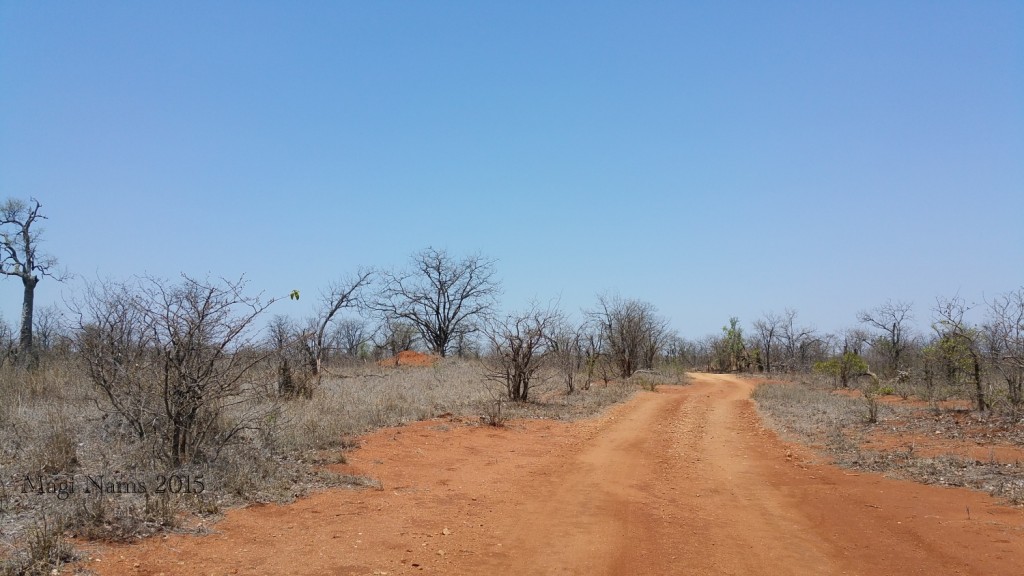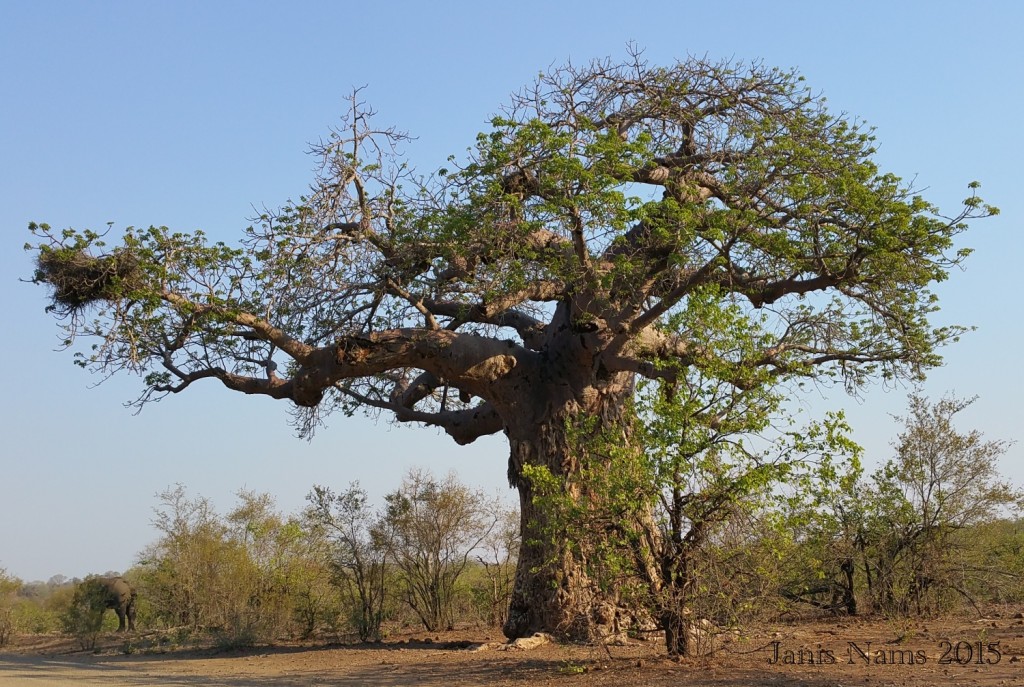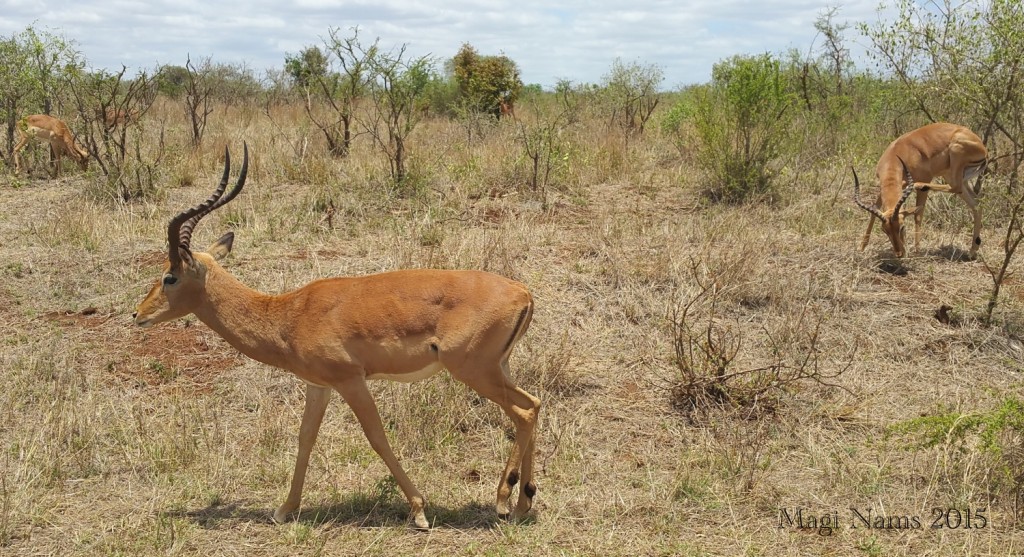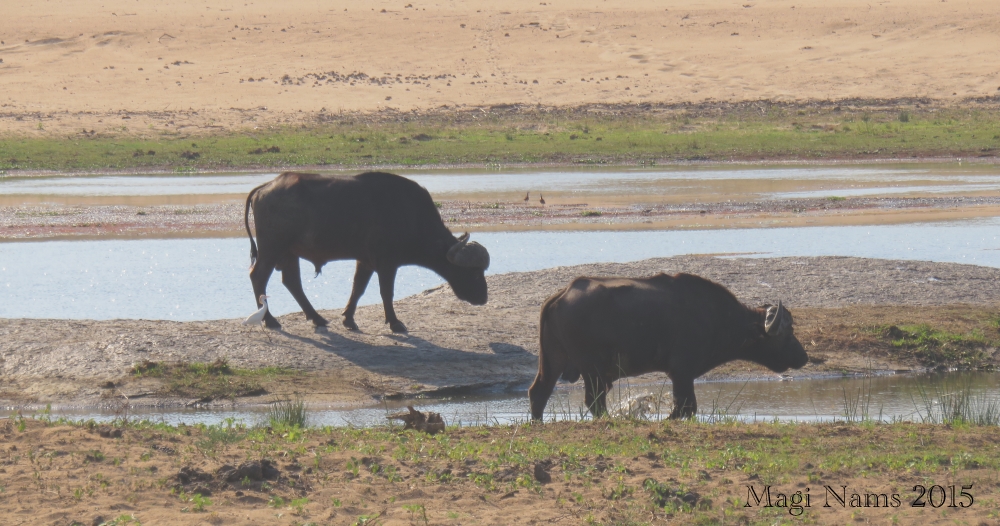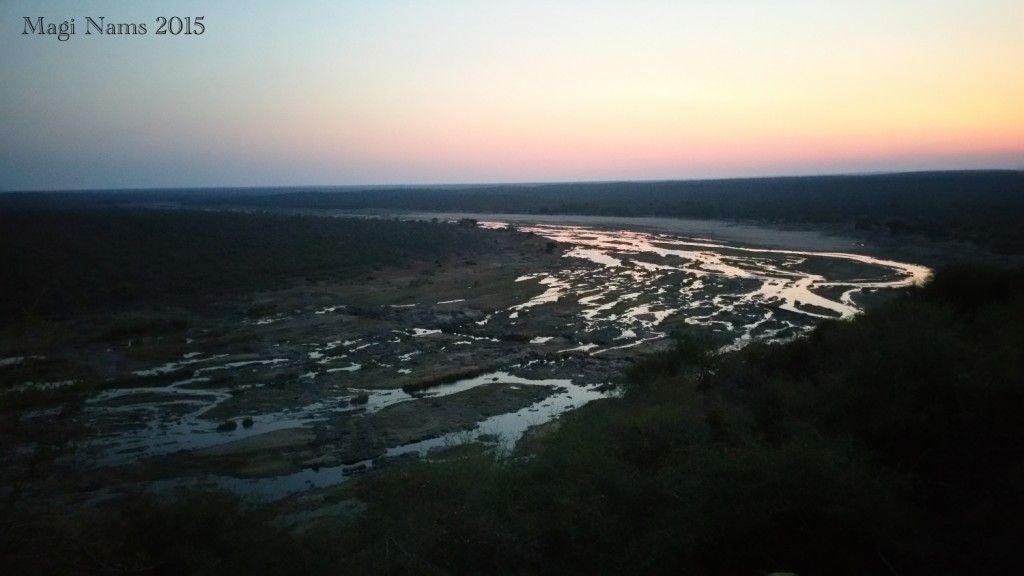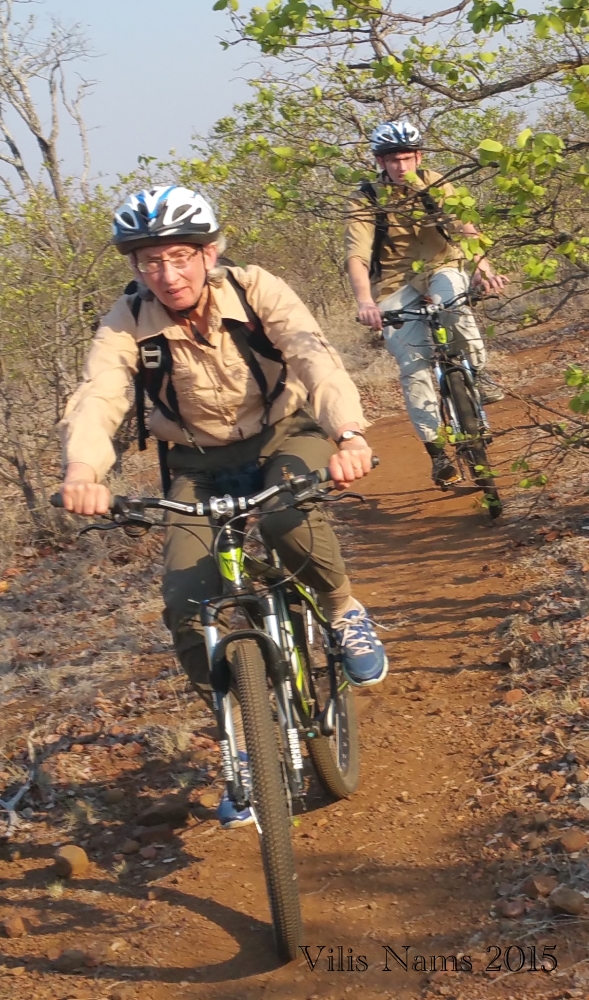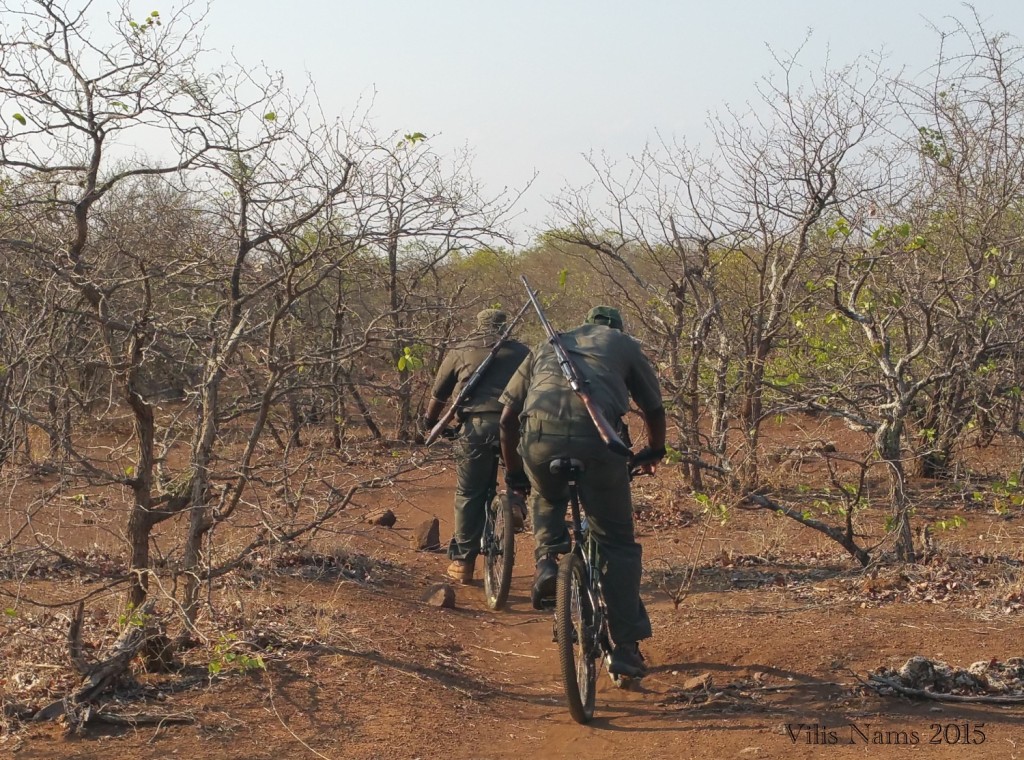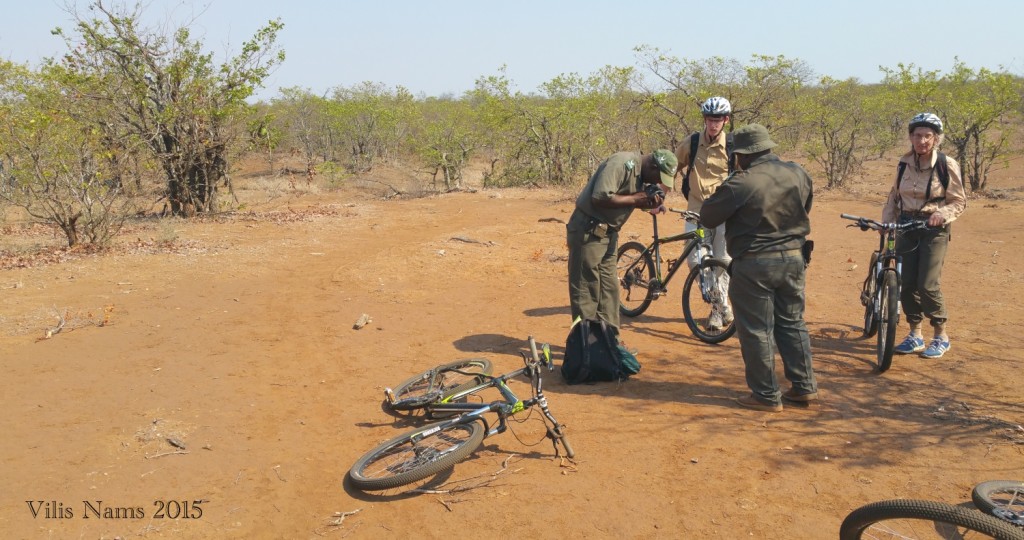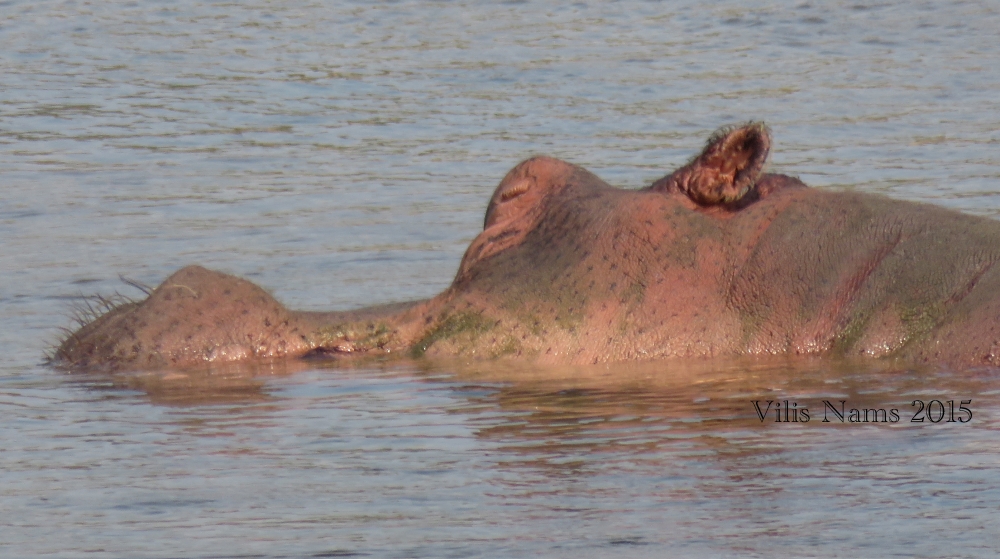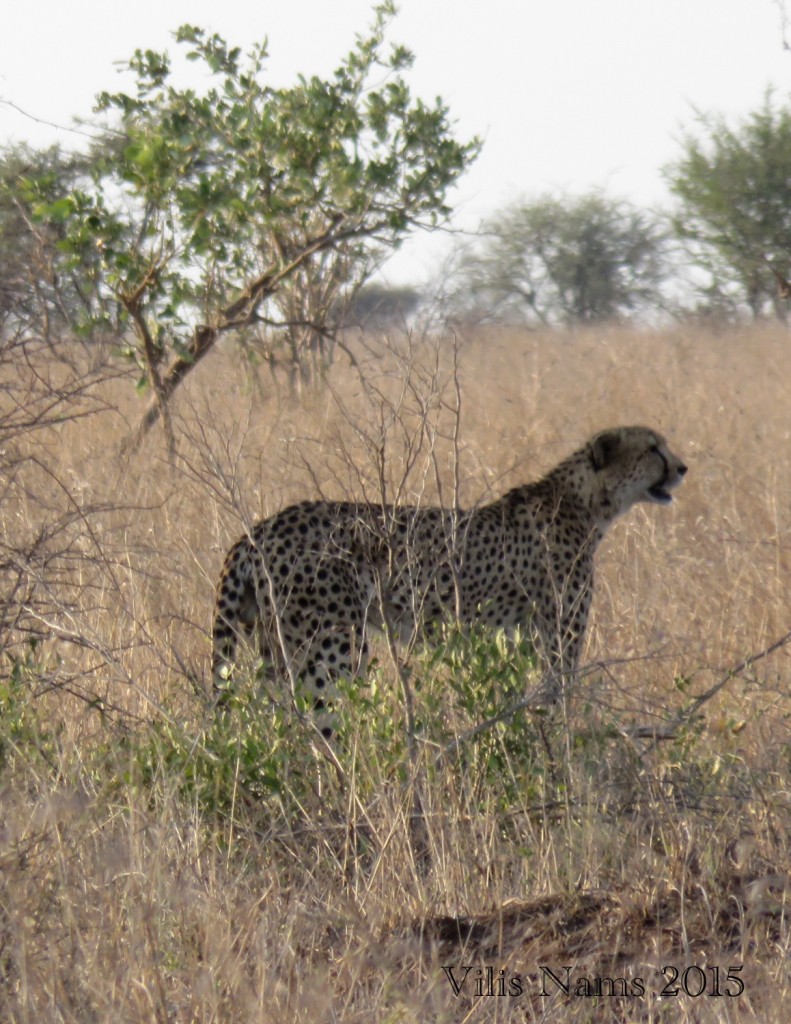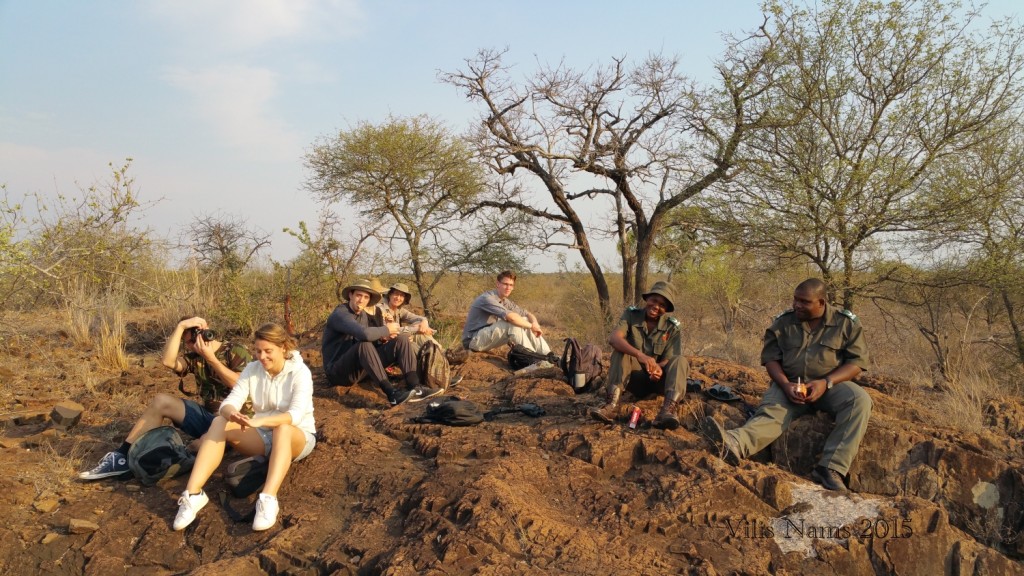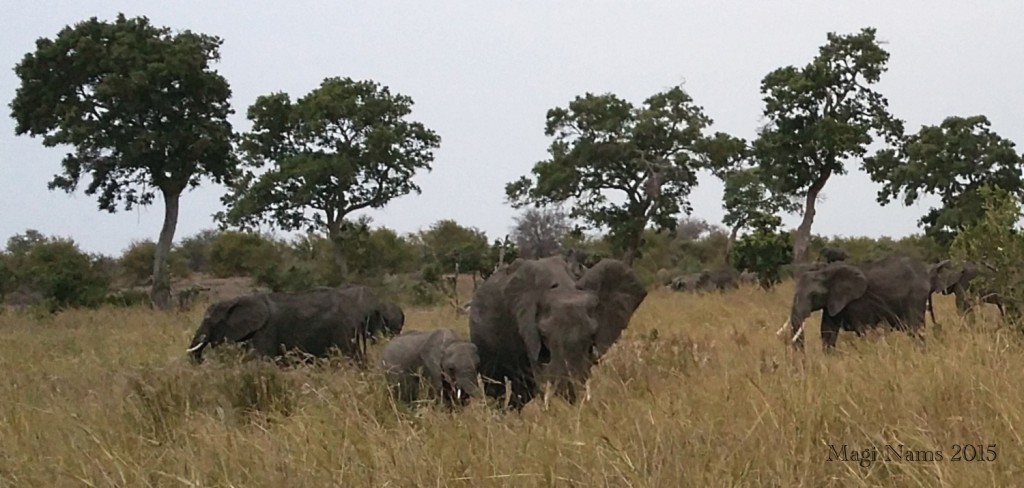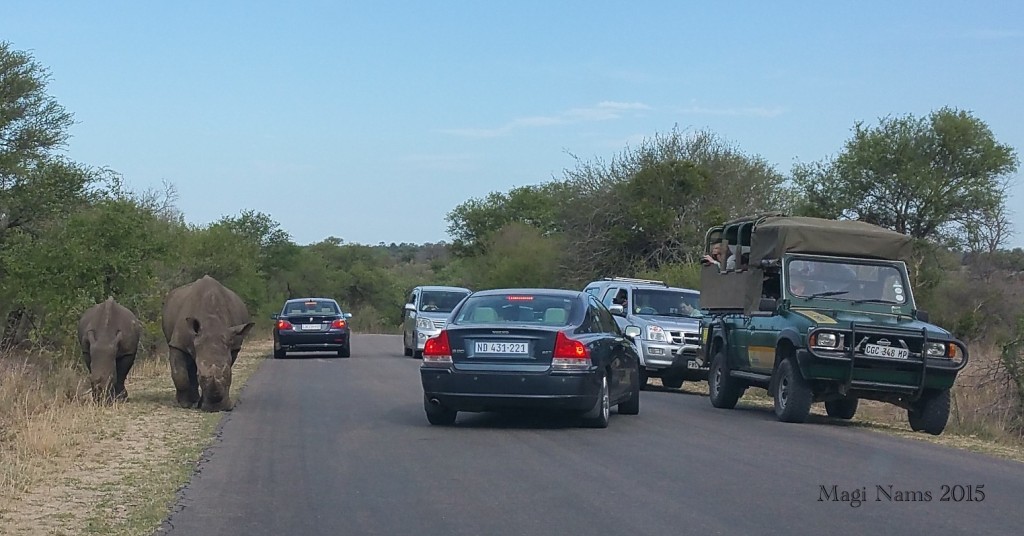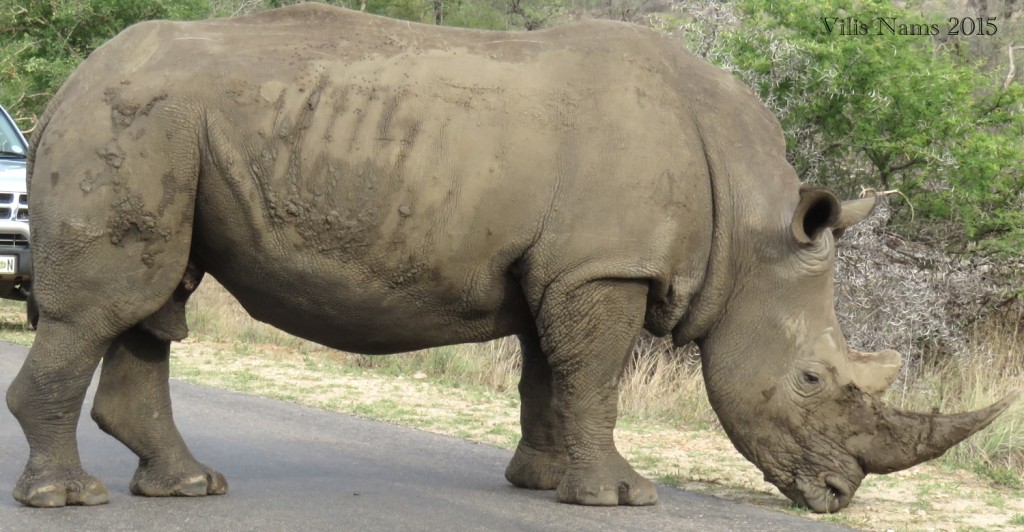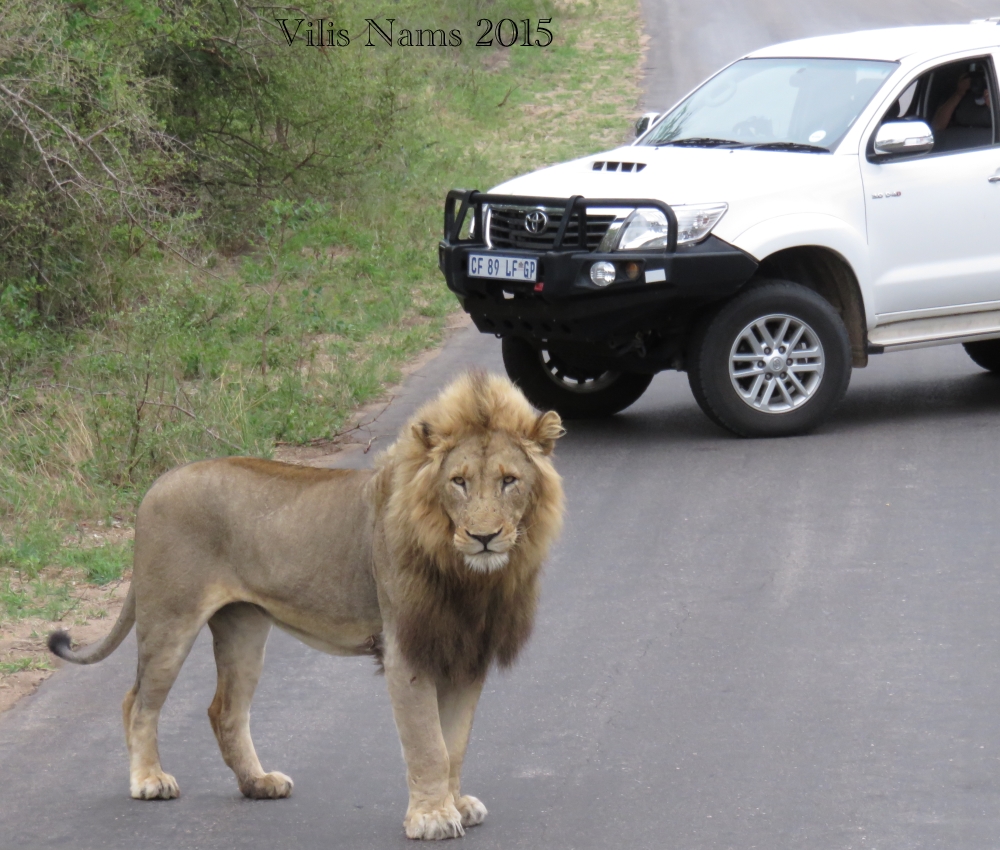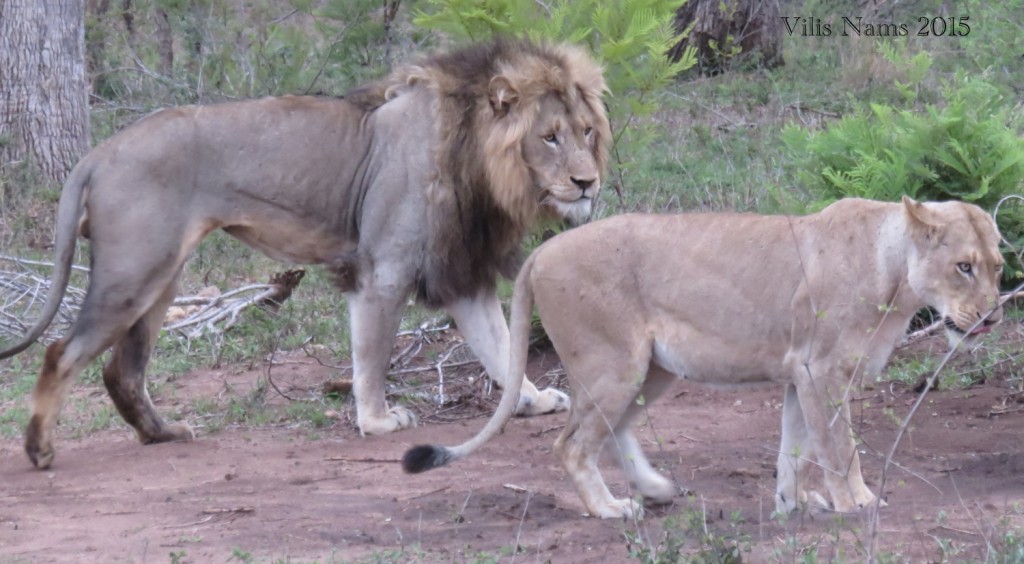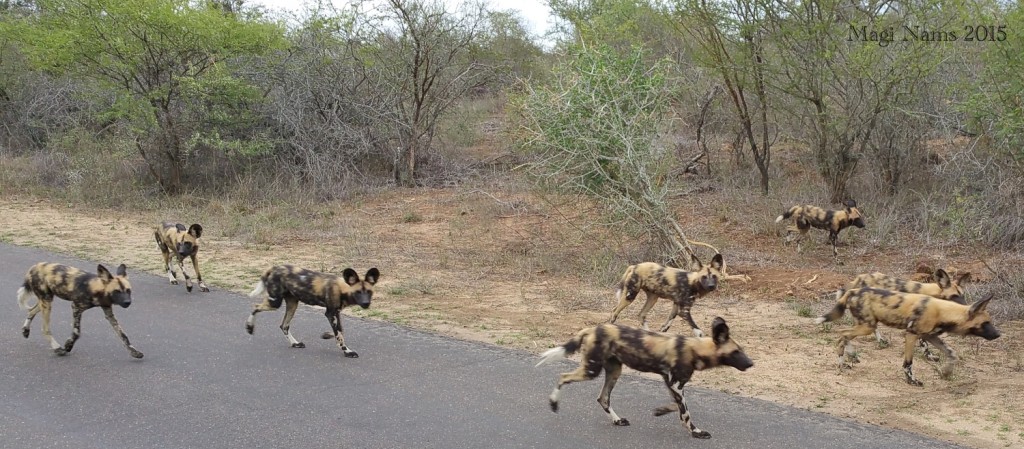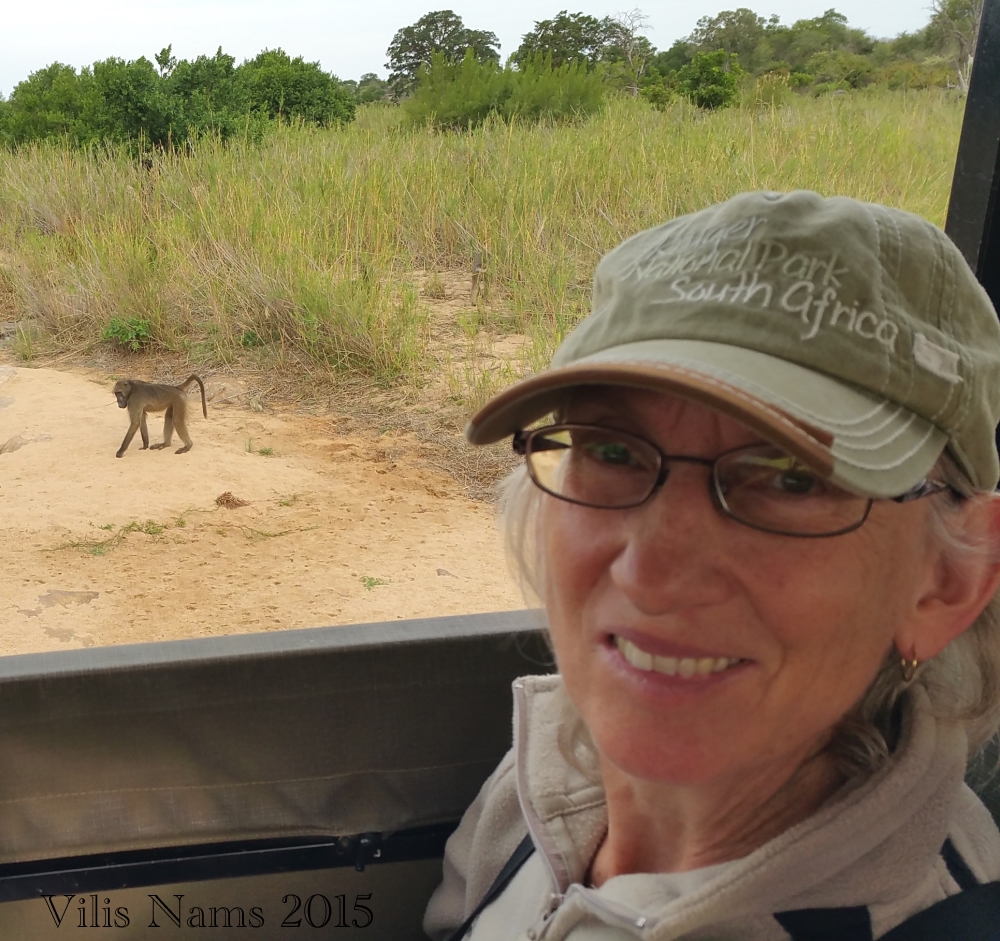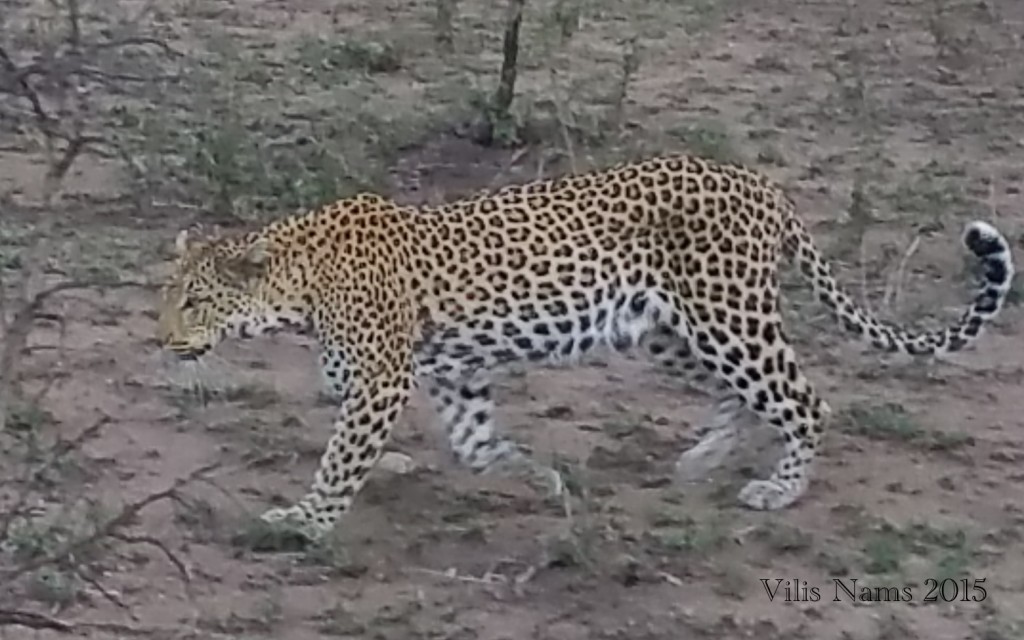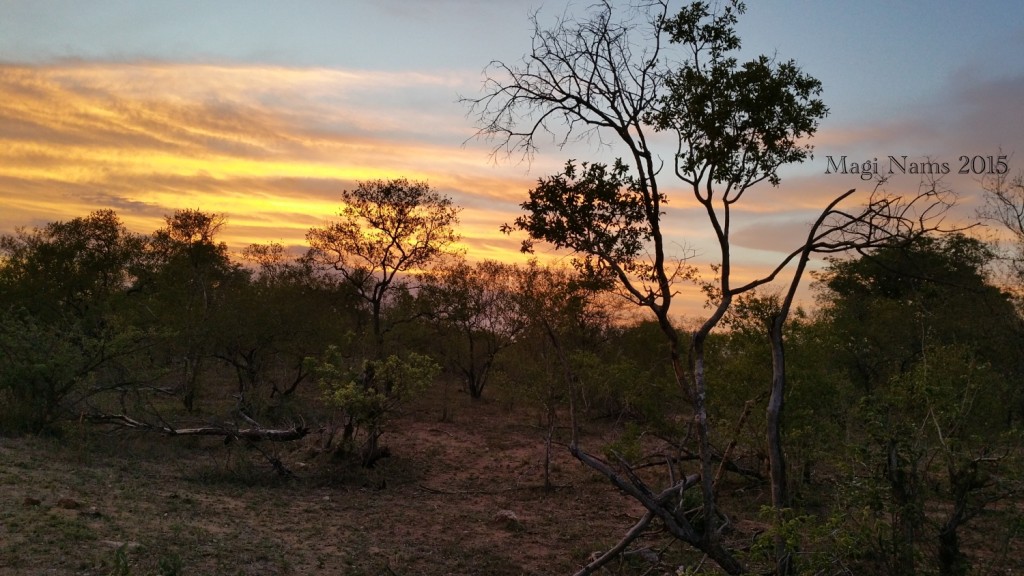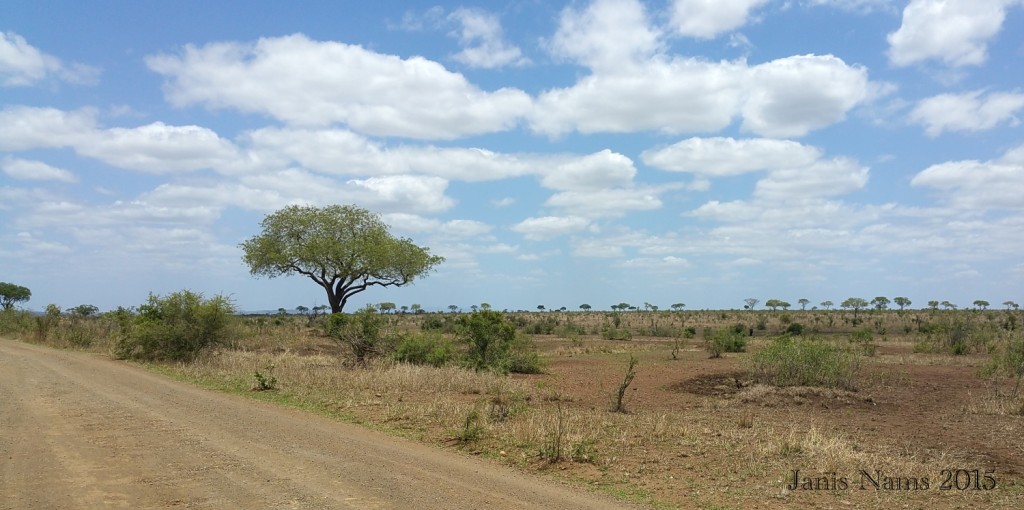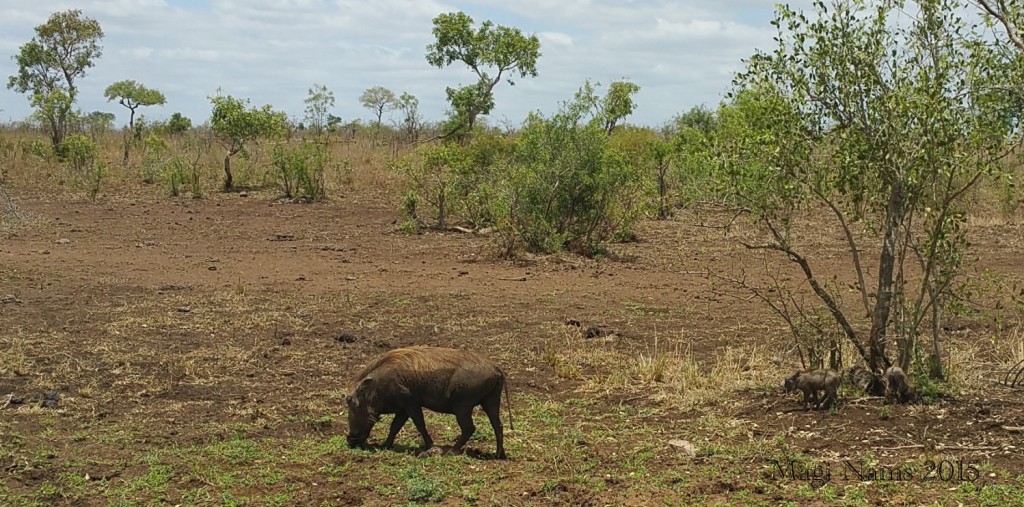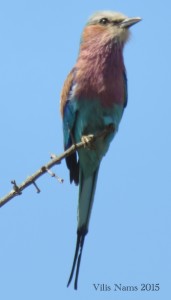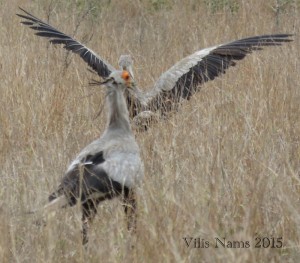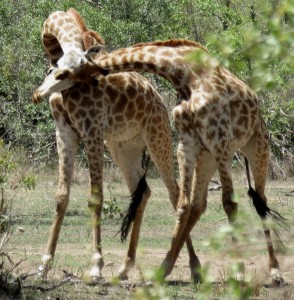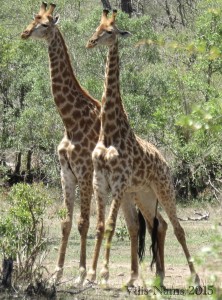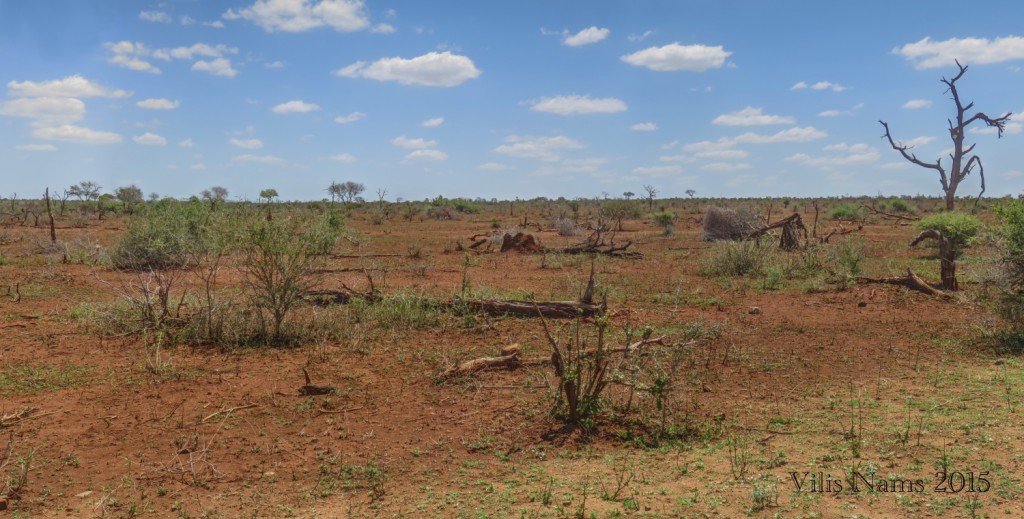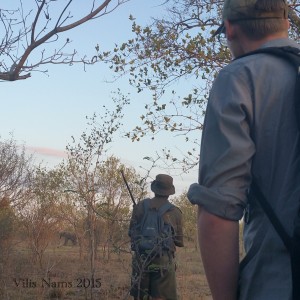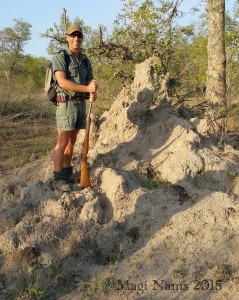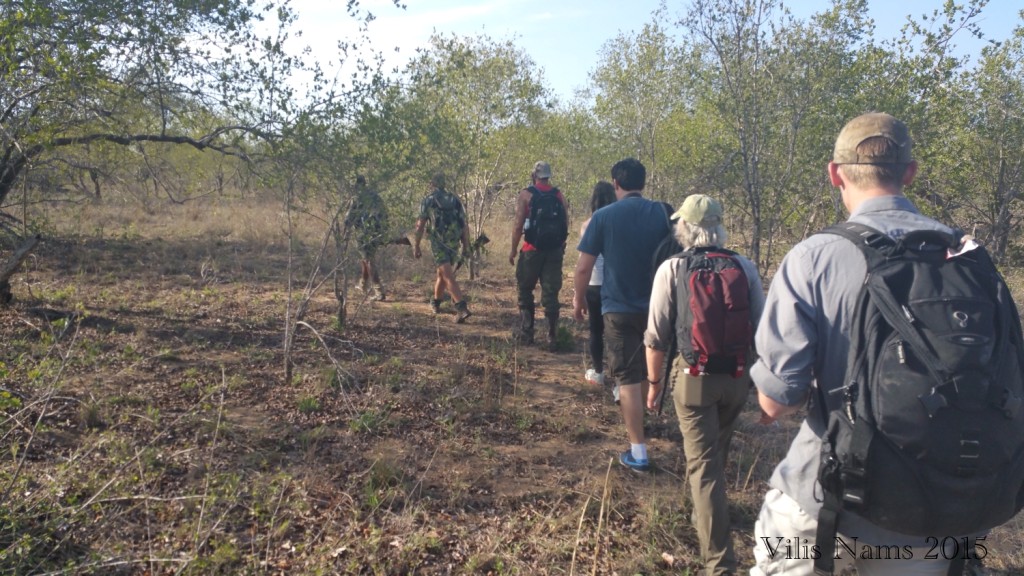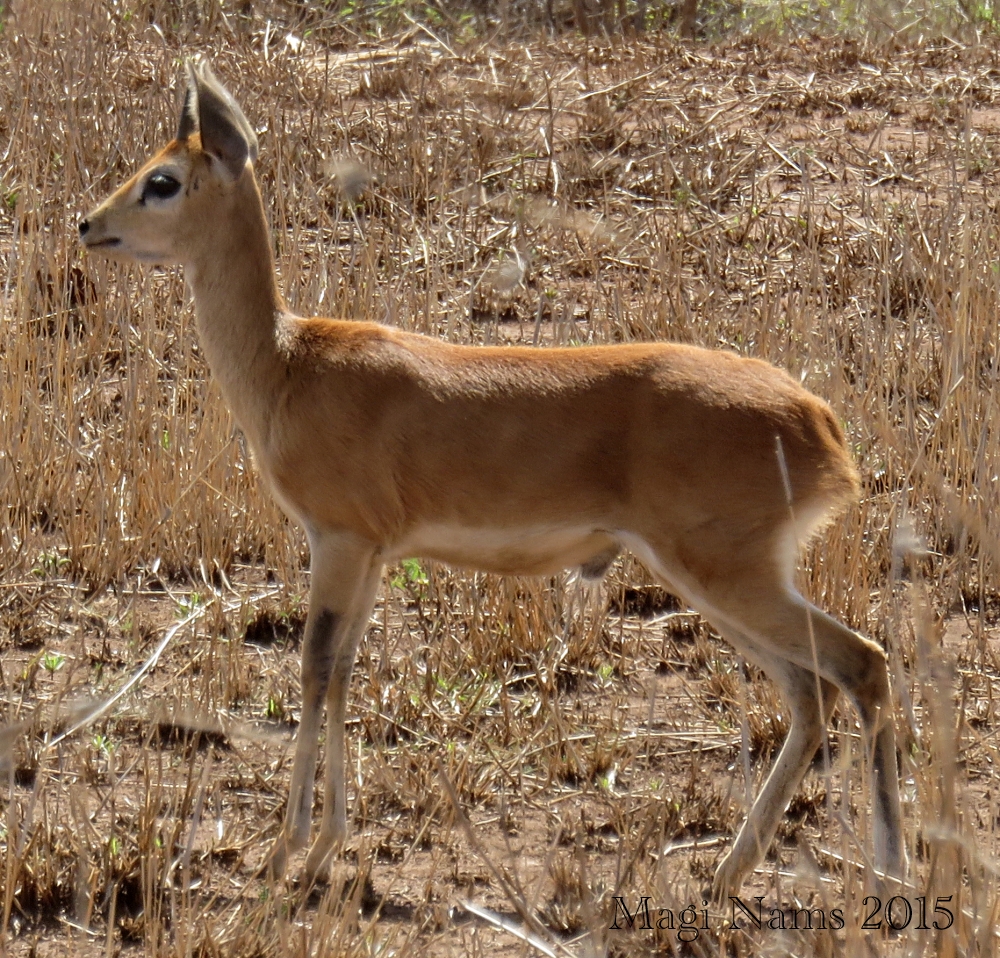Join me for ten fabulous days in South Africa’s legendary Kruger National Park! Despite a months-long drought, Kruger served up fabulous sightings of the Big Five, other classic African wildlife and a host of spectacular birds.
In mid-November, Vilis and I flew to Johannesburg to meet our son, Jānis, who had flown from Halifax, Canada. Then the three of us headed northeast from Jo’burg to Kruger National Park, often simply referred to as the Kruger or Kruger. Several of the lion data sets Vilis is working with are from Kruger National Park, so he was keen to see the environment the big cats live in. (Tap on photos to enlarge.)
Long and narrow, Kruger National Park is tucked into the most northeasterly corner of South Africa, abutting Zimbabwe to the north and Mozambique all along the park’s eastern border. Kruger is South Africa’s oldest and largest national park. It spans an area of nearly 2 million hectares or 20,000 square kilometres and is one of the world’s premier wildlife-viewing areas, which is why Jānis and I were there. We spent a total of almost ten days in Kruger National Park, split between the park’s middle section, based at Olifants rest camp, and the southern section, based at Skukuza rest camp.
November 11, Phalaborwa Gate to Olifants Camp: The parched, dusty vegetation we encountered was shocking and certainly brought home the fact that Kruger National Park was in the grip of a devastating drought. The park hadn’t received any rain since early September. That rain had caused a few tree species to unfurl their leaves, giving a touch of green to the landscape, but the grasses were grey and desiccated. Normally by mid-November, summer rains would have triggered a flush of green all across the veld. We saw two baobab trees, each towering over the surrounding vegetation.
Impalas were everywhere (150,000 of them in the park), but other herbivores tended to be concentrated at water sources. At Sable Dam, a large herd of elephants (with several babies) drank from and dunked themselves in the water before emerging, wet and muddy. At the shrunken Letaba River, buffalo, giraffes, elephants and an assortment of large birds, including geese and storks, drank from the river or foraged in and on its banks. Nile crocodiles rested on a sandbar. Elsewhere along our route, small dams (water holes), some fed by cisterns and windmills, had attracted zebras and elephants.
In late afternoon, we reached Olifants camp, with its million-dollar view from the top of an escarpment, out over the Olifants River and surrounding woodland. At dusk, thousands of bats left their roosts in the thatched restaurant roof and winged erratically through the hot night air. Desperate for a touch of coolness, we ran the air conditioning in our rondavel all night.
November 12, Olifants and surrounds: Our alarms rang at 3:45 a.m., and we hurriedly dressed and ate a snack before joining two guides, armed with .458-calibre rifles, for a four-hour, 15-kilometre mountain bike ride. We drove 12 kilometres from camp and then cycled along a rough vehicle track and game trail through open mopane-dominated woodland. Our guides pointed out leopard tracks, a train of army ants and white rhino tracks. We met two anti-poaching rangers rigged out with assault rifles, which was a wake-up call about the seriousness of rhino poaching in the park. Farther along the rhino trail that we were following, our guides spotted possible poacher footprints on the trail. Vilis helped the rangers get a GPS location for the site, and our guides called it in. Fortunately, the footprints were headed in the opposite direction to our travel, so we were able to continue our ride.
Halfway through the ride, at 7 a.m., we rested and snacked at the Olifants River. The sun was already scorching hot. Upstream, hippos in a pool grunted and blew out spumes of water. Baboons shouted and romped on a rock outcrop near the hippos. The skull of a young male hippo killed four months ago by a dominant bull hippo in a fight over females displayed huge, incredibly sharp lower canine teeth.
We mounted the bikes for the return ride and, two hours and three flat tires later, returned to the game-viewing vehicle. My clothes were drenched with sweat, and my face burned from heat and exhaustion. My tailbone reminded me of every rock and hole I’d jounced over during the ride, and my legs felt like they had zero strength left in them. The heat was the most intense I had ever experienced, as though I was too close to a campfire, but there was no campfire. Yet, I could say that I’d been mountain biking on a rhino trail in Africa!
Back at camp, we rested in our unit, evading the 40° Celsius midday heat. Then we drove two short loops near the rest camp, so glad that our rental vehicle had air conditioning. Highlights of the drive included a long view from Olifants Lookout and a river crossing where we saw a hippo and waterbuck up close, and elephants and impalas feeding in the distance.
After darkness fell, we went on a night game drive, where spotlights were used to catch the reflections of animals’ eyes and reveal their bodies moving through the woodland. We spotted a hippo feeding far from the river, scrub hares hopping on the tarred road, an African civet foraging near the road, and two curious spotted hyena pups that gazed up at the vehicle from beside their den in a culvert. By the end of the drive, we were beat, but we’d had an amazing day filled with wild South Africa.
November 13, Olifants to Satara Loop: By 7 a.m., the temperature was already soaring and the bald sun in clear blue sky promised another scorcher of a day. After breakfast, we briefly revisited Olifants Lookout, from which we watched a hippo lap up water, with three crocs right beside it.
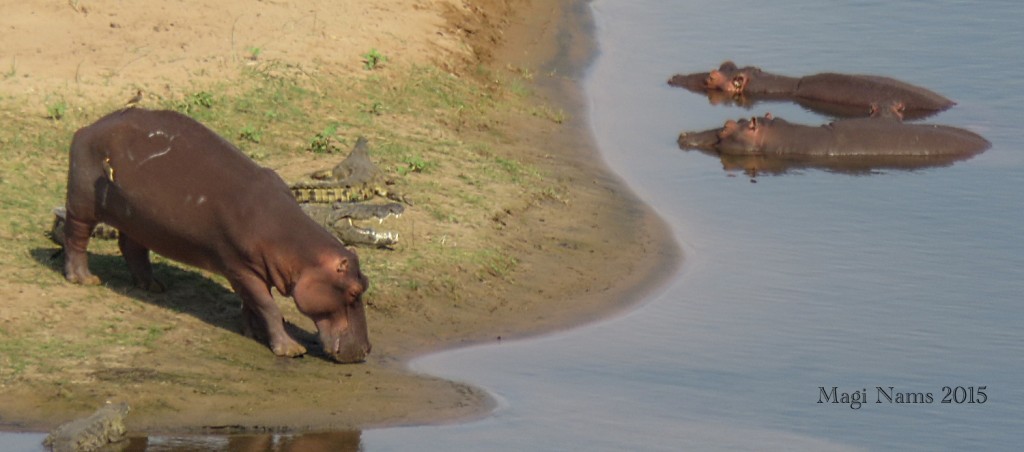
Hipppotamuses (Hippopotamus amphibius) and Nile Crocodiles (Crocodylus niloticus) at Olifants River, Kruger National Park (© Magi Nams)
We spent the next ten hours slowly driving a 160-kilometre loop of roads linking Olifants camp and Satara camp (50 kilometres south) as we scanned the veld for wildlife. We were so thankful for the air conditioning in our vehicle. Outdoors, the touch of the sun was like a flame on bare skin, the temperature climbing above 40° Celsius by early afternoon. We drove past empty dams pocked with animal tracks and dry, sandy riverbeds that wound like barren ribbons across the landscape.
South of Olifants rest camp, the mopane woodland gave way to open savannah, which made it much easier to spot wildlife. Pockets of shade under trees provided refuges for giraffes, blue wildebeests, waterbucks, kudus, guineafowl, bustards, ground hornbills, vervet monkeys and numerous impalas. Many of the impala ewes were obviously very pregnant. During the previous evening’s game drive, we’d learned that female impalas can delay dropping their young by three to four weeks in order to have the births coincide with the flush of new grasses that follow the arrival of summer rains.
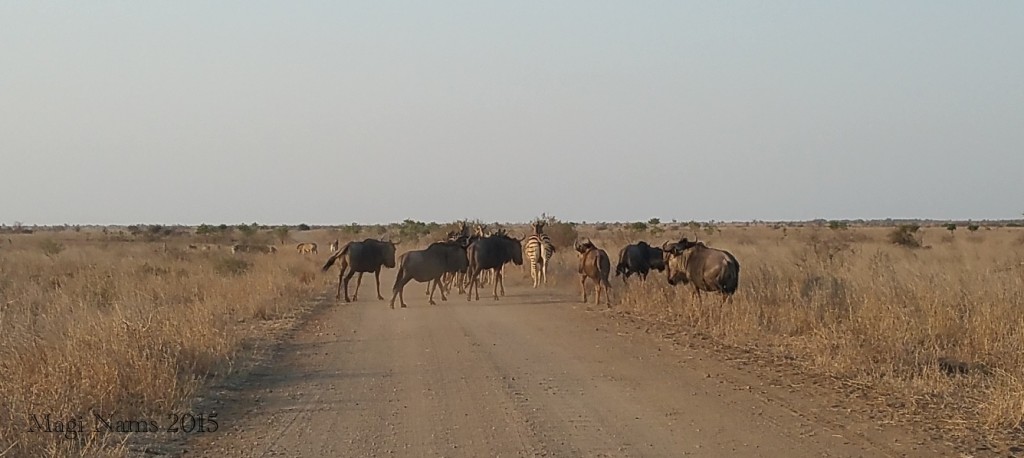
Late Afternoon “Rush Hour” of Blue Wildebeests (Connochaetes taurinus) and Plains Zebras (Equus quagga) near Satara, Kruger National Park (© Magi Nams)
In late afternoon, the animal activity increased. East of Satara, the savannah was alive with antelopes, zebras and blue wildebeests. Exhausted-looking elephants trod slowly away from a small dam, their skin sagging from jutting bones. Two male cheetahs rested and groomed in shade under a tree and then stretched and trotted away, likely in search of prey. We returned to camp, cooked up a quick supper and then crashed into bed, sated with wildlife.
November 14, Olifants and area: Again, we rose at 3:45 a.m., this time for a two-and-a-half-hour early morning walk. After driving away from camp, we, several other guests, and three guides strode quietly over powdery red soil through open mopane woodland. The head guide pointed out elephant dung filled with bits of twigs and bark, a cylindrical baboon spider hole, a spiral impala horn with holes drilled in it by horn borer moth larvae and a water hole created by the wallowing of elephants, rhinos, warthogs and hippos. Impalas bounded away from us at a distance, their wary response to humans on foot totally opposite to their complacent grazing at the roadsides as vehicles pass by.
After we returned to camp, we, like the animals, rested in the shade during the heat of the day. In the late afternoon, we went on a three-hour sunset game drive. The wind was up, blowing curtains of sand along riverbeds and dust clouds along gravel roads. A change was in the air. We spotted hippos and antelopes, a large herd of elephants feeding on yellowed grasses and a regal lion gazing out over a large dam. Thunder rumbled, and lightning flashed in the darkening sky. As we spotlighted our way back to camp, rain – blessed rain! – pelted down, wetting the hot dust.
November 15, Olifants to Phalaborwa gate: The air was fresher after the previous evening’s thunderstorms. The grey vegetation had been washed clean of dust by the rain. Cicadas buzzed loudly, and leopard tortoises crossed the main road between Olifants camp and Phalaborwa gate. These were the first tortoises we’d seen in the park. Suddenly, it seemed as if there was hope amid the heat and barren, red soil. We left the park in mid-morning and headed for Bela-Bela and five days of tracking wildlife in Limpopo (next post), after which we would return to Kruger. I wondered if a week was long enough for that flush of new green growth that the animals and park staff had been waiting for to appear.
November 21, Paul Kruger Gate to Skukuza, late afternoon: Five minutes after we’d entered Paul Kruger Gate, in the southwest corner of the park, an adult and a subadult white rhinoceros lurched up onto the road right in front of us and proceeded to graze grasses edging the pavement. The vegetation surrounding us definitely had a green tinge, no doubt the result of recent rains. Exhausted after a day of driving back to Kruger from the track and sign interpretation class, we headed for Skukuza camp on the Sabie River. En route, we spotted huge Marabou storks, hippos and hornbills.
November 22, Skukuza and area: Up at 3:15 a.m., we groggily ate a quick snack and then climbed into a game drive vehicle for a four-hour sunrise game drive. Before dawn, spotlights revealed giraffes, helmeted guineafowl, impalas, and a hippo that crossed the road, likely heading back to water after a night of grazing. As night gave way to day, we also chalked up sightings of duiker, waterbuck, mongooses, and a troop of baboons grooming at the roadside.
The driver of another game drive vehicle reported lions ahead, and we soon revelled in views of two pairs of “honeymooning” lions and a single male. The lone lion limped onto the road verge, flopped down, and emitted several deep-throated roars.
On the drive back to camp, we passed a bachelor herd of buffalo, two nyala rams in a dry riverbed and hippos in a river pool. To top off an already incredible game drive, a pack of wild dogs ran past us just outside camp.
During the late morning and early afternoon, we strolled around camp and rested up. At 4:30 p.m., we headed out on a three-hour sunset game drive that at first looked like it was going to be a bust but later delighted us with a baboon troop playing in an almost-dry riverbed and then thrilled us with two leopard sightings. I spotted the first leopard resting in a tree. It gave a startled bounce to its feet then ran down the tree’s trunk and disappeared. A guest at the back of the vehicle spotted the second leopard, at the base of a tree. This leopard was much less wary than the first and leisurely crossed the road in front of us before striding away into the savannah. For an instant, it looked up at us, its yellow eyes filled with wildness.
As the light dimmed, we spotted a side-striped jackal and a family group of zebras. A glorious African sunset painted brilliant pinks, oranges and golds over the landscape as the light faded to darkness. My eyes kept closing as we spotlighted our way back to camp, but I did see scrub hares and a pack of spotted hyenas. The latter’s tall-at-the-shoulders bodies seemed to hunch their way along the roadside. Back at camp, we quickly ate supper and crashed into bed. Although exhausted, we’d had an amazing day of sightings. Lion. Leopard. Hyena. Wild dog. Jackal. Buffalo…
November 23, Skukuza to Crocodile Bridge: With Jānis behind the wheel again, we put in eight hours of driving gravel roads between Skukuza and Crocodile Bridge rest camp at the southern edge of the park. Like on our self-drive game drive between Olifants and Satara, we saw an incredible variety of birds and mammals, plus leopard tortoises and a water monitor. Marabou storks soared above riverside trees, hippos grazed on the shores of rivers and dams and vultures perched in trees, their shoulders hunched. A female warthog with three piglets foraged near the road, and we passed the plural of impala, buffalo, steenbok, waterbuck, kudu, blue wildebeest, white rhino, zebra, croc, elephant and giraffe.
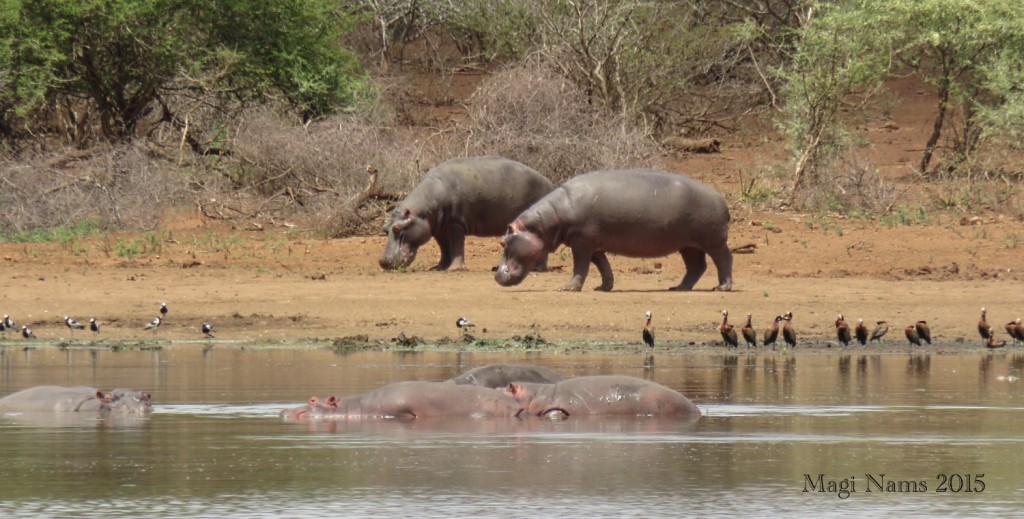
Hippopotamuses (Hippopotamus amphibius), Blacksmith Lapwings (Vanellus armatus) (left) and White-faced Whistling Ducks (Dendrocygna viduata)(right) at Lower Sabie Dam, Kruger National Park (© Magi Nams)
Farther south, in grassland speckled with low-growing trees, a pair of secretarybirds – big grey and black birds that look like eagles on stork legs – performed a courtship display, one chasing the other, the first bird’s wings held high. Exquisitely coloured lilac-breasted rollers perched on open branches as they surveyed their surroundings. Two male giraffes stood hip to hip and swung their horned heads at each other like sledgehammers. White rhinos grazed peacefully. Elephants foraged just outside the Crocodile Bridge camp, an oasis of trees in the elephant-devastated veld. I can only describe this day as truly spectacular in terms of wildlife.
November 24, Skukuza area: One more time, we scrambled out of bed at 3:45 a.m., in order to take in a guided morning walk. Our head guide drove us about twenty minutes away from camp, and then we walked as silently as possible across the veld, with its red soil and open, scrubby woodland. Only a few minutes later, our two guides held up their hands to stop us. A small family group of elephants was feeding nearby and could see us, but couldn’t smell us. We retreated and then paused as the matriarch walked toward us. She stopped, her head cocked to the side as she tried to figure us out. Having smelled us, she turned away and urged the other elephants to move away. Since we could still hear them breaking branches, we detoured around the area.
Within five minutes of the elephants sighting, our guides again held up their hands. We froze as a big bull white rhino emerged from the bush, walking toward us, with its head down, obviously unaware of our presence. Our head guide coughed once loudly, and the rhino turned on a dime and pranced a few steps, then stood with its head up, poised for action. Our guide coughed again, and the rhino trotted away into the bush.
The rest of the walk was icing on the cake. The guides showed us elephant and rhino droppings and tracks, and a fresh scrape and dung left by a territorial male black rhino. With our senses sharpened after taking the track and sign interpretation class, Vilis, Jānis, and I recognized brown hyena and kudu tracks in mud at a wallow, and many other spoor. We all stopped for a termite lesson at a huge termite mound. Halfway through the hike, we paused on a granite outcrop to enjoy a snack of biltong and dried mango, juice and crackers and cheese, and then hiked out to the vehicle.
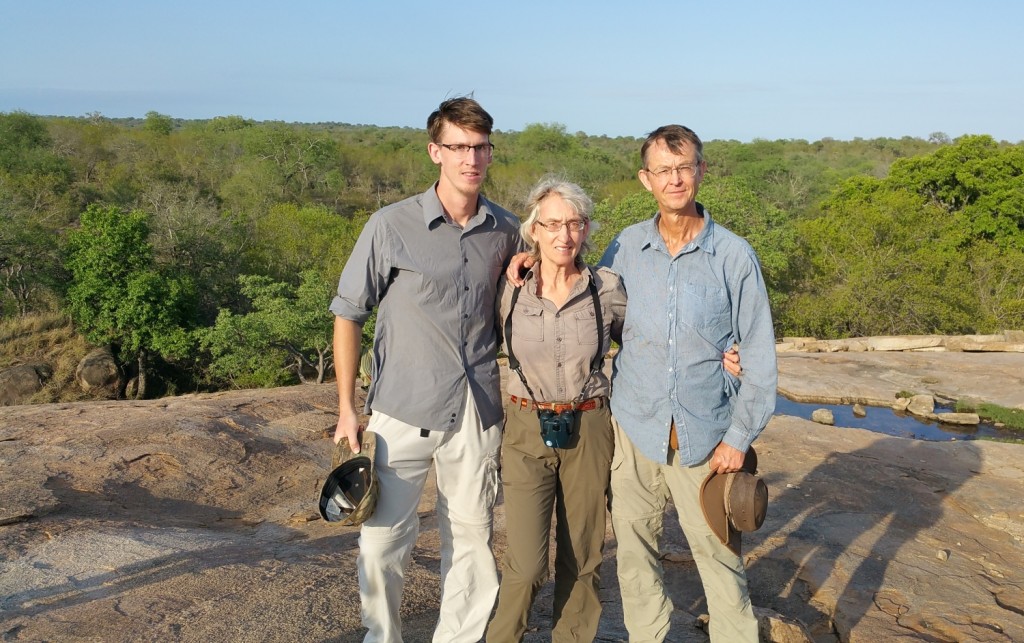
Jānis, I, and Vilis at Morning Walk Rest Stop, Kruger National Park (photo courtesy of SANParks guide)
Again, we rested and pottered about around camp until mid-afternoon. A two-hour drive netted us sightings of white rhinos grazing in open shrubland and a leopard snoozing on a granite outcrop, its cache of an impala carcass in a nearby tree.
At 8 p.m., we headed out for a night drive, the warm wind blowing over our bodies. The spotlights caught hippos, a male bushbuck, spotted thick-knees lifting into whirring flight, a common duiker, and bush babies (southern lesser galagos) leaping from branch to branch in tall trees. A breeding herd of about 70 buffalo that looked like dark spectres rested on the edge of the road and in an adjacent riverbed. Vilis nodded off beside me, and I dozed now and again, weary from another long day and lulled into peace by the African night.
November 25, Skukuza to Phabeni Gate: At 7 a.m., we left Skukuza and drove southwest to Phabeni Gate. During that hour, we spotted elephants on the horizon, white rhinos grazing in a clearing, giraffes, a steenbok, many elegant impala, a good assortment of birds, and a breeding herd of buffalo grazing in a grassy, wooded site beside the road. Again, Kruger had laid out its riches for us.
Beyond the park, we drove past orchards, plantations, and farm fields flayed by fierce winds, with soil dust billowing high, as though sucked upward by thunderstorms overhead. At the airport in Johannesburg, Vilis and I hugged Jānis goodbye, so glad to have shared our Kruger adventure with our son.
My Kruger National Park trip bird list (includes birds seen on drives from and to Johannesburg): common myna, *black-crowned tchagra, Cape glossy starling, yellow-fronted canary, European bee-eater, green wood-hoopoe, *violet-backed starling, *palm swift, village weaver, *cut-throat finch, lesser striped swallow, pearl-breasted swallow, *blue waxbill, crowned lapwing, *barn swallow, African green-pigeon, *orange-breasted bush-shrike, *white-bellied sunbird, *Marico sunbird, yellow-billed kite, house sparrow, *red-billed hornbill, *lilac-breasted roller, *great spotted cuckoo, red-billed oxpecker, blacksmith lapwing, jackal buzzard, mocking cliff chat, fork-tailed drongo, *purple roller, *southern yellow-billed hornbill, black-winged stilt, great egret, African spoonbill, *African openbill, African fish-eagle, Egyptian goose, African jacana, hadeda ibis, *magpie shrike, black-headed heron, black stork, red-winged starling, grey heron, dark-capped bulbul, *saddle-billed stork, *African hawk-eagle, Cape wagtail, *martial eagle, *white stork, *yellow-billed stork, goliath heron, little egret, laughing dove, southern grey-headed sparrow, *scarlet-chested sunbird, *crested barbet, *Natal spurfowl, black-backed puffback, *African cuckoo, little swift, *common sandpiper, three-banded plover, *common ringed plover, *hamerkop, wood sandpiper, *bataleur, *grey go-away-bird, *Swainson’s spurfowl, *southern ground hornbill, helmeted guineafowl, chinspot batis, *spectacled weaver, *southern whtie-crowned shrike, *black-bellied bustard, *white-headed vulture, *white-backed vulture, *kori bustard, Cape turtle-dove, *tawny eagle, fiery-necked nightjar, white-breasted cormorant, *white-browed robin-chat, brown-hooded kingfisher, *crested francolin, *little bee-eater, ostrich, *red-crested korhaan, *Marabou stork, *African pied wagtail, collared sunbird, red-chested cuckoo, black-collared barbet, *purple-crested turaco, red-eyed dove, *trumpeter hornbill, speckled mousebird, tawny-flanked prinia, *yellow-breasted apalis, African paradise-flycatcher, Cape white-eye, *lesser masked weaver, crowned hornbill, Burchell’s coucal, *hooded vulture, *bat hawk, white-faced whistling duck, white-rumped swift, *lappet-faced vulture, secretarybird, woodland kingfisher, southern boubou, pied kingfisher, black crake, water thick-knee, *squacco heron, spotted thick-knee, *grey-rumped swallow.
My Kruger National Park trip mammal list: impala, African elephant, giraffe, baboon, plains zebra, African buffalo, kudu, *hippopotamus, waterbuck, bushbuck, *tree squirrel, scrub hare, steenbok, *spotted hyena, springhare, *African civet, *dwarf mongoose, large grey mongoose, *banded mongoose, blue wildebeest, vervet monkey, cheetah, warthog, lion, *Sharpe’s grysbok, white rhinocerus, common duiker, nyala, *wild dog, *leopard, *side-striped jackal, *slender mongoose, *southern lesser galago.
My Kruger National Park trip reptile list: *Nile crocodile, *striped sand snake, water monitor, leopard tortoise.
My Kruger National Park trip invertebrate list: Matabele army ant, dung beetle, millipede.

